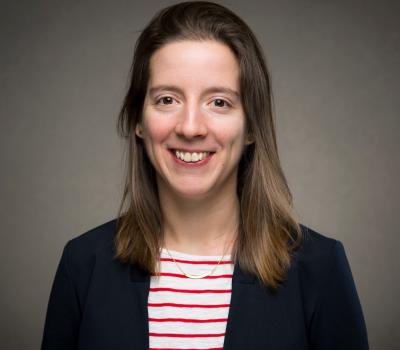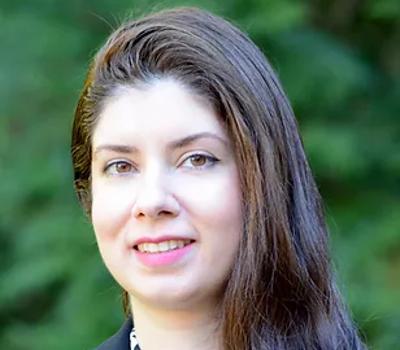Our Story
Every year, we take great pride in showcasing our school's achievements. We share the most compelling stories, exciting statistics, and notable new hires that have contributed to our school's success. From groundbreaking research to innovative teaching methods, we celebrate the outstanding accomplishments of our students, faculty, and staff. Whether you're a prospective student, a current member of our community, or simply interested in learning more about us, join us in celebrating the Iincredible impact of our school.
Harnessing community scientists to measure snow pack
In 2017, NASA enlisted David Hill, professor of coastal and ocean engineering, doctoral student Ryan Crumley, and colleagues at other institutions to recruit community scientists and incorporate data they gather into computer models to generate important snowpack information for scientists, engineers, and land and watershed managers.
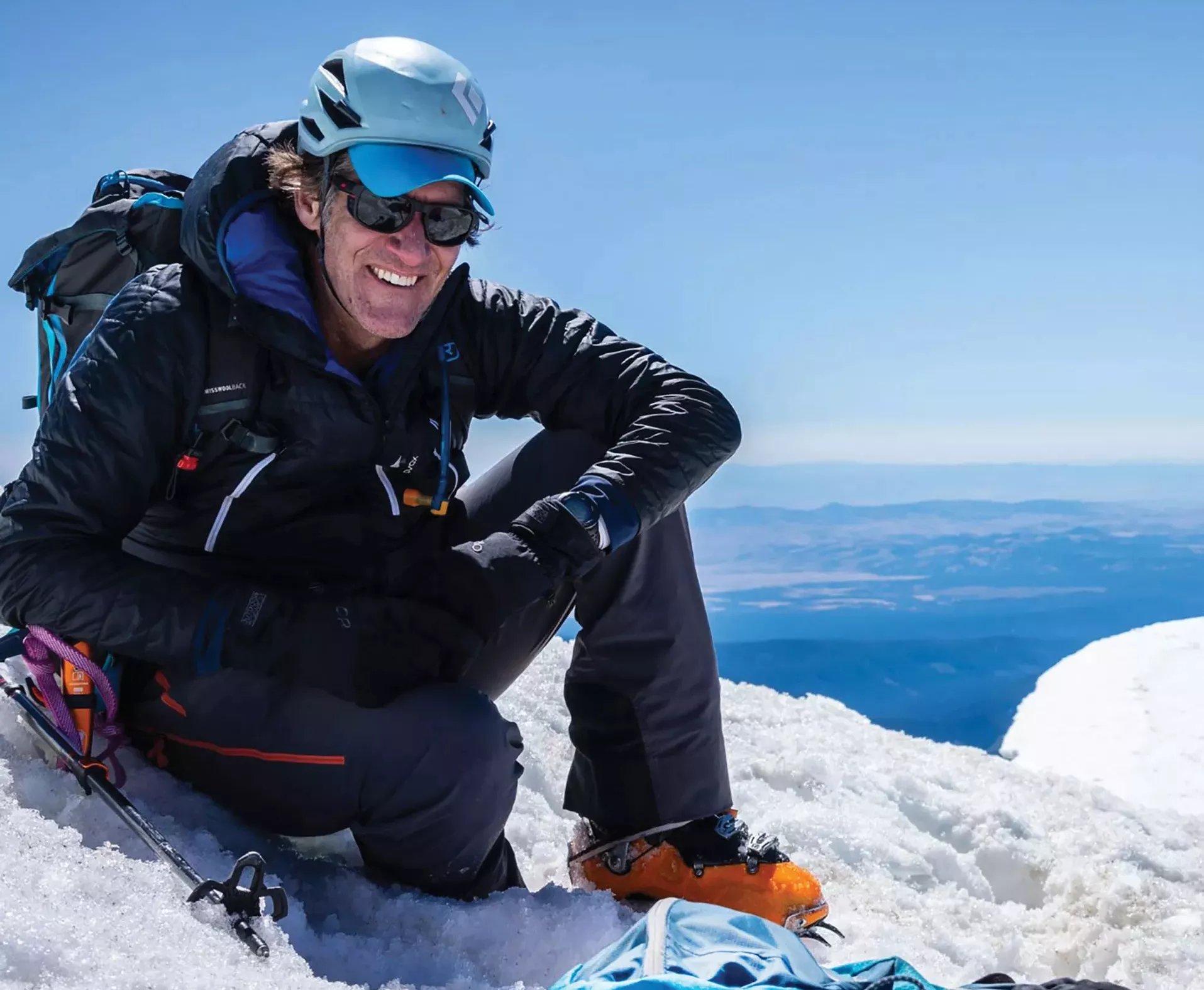
A smartphone and an avalanche probe with graduated markings in centimeters are the only tools needed. As community scientists make their way through the mountains, they use their avalanche probes to take snow depth readings that they then upload using an app on their phone.
“We serve up real-time grids on snow information at many sites across the United States, including the Central Cascades in Oregon,” Hill said. “The general public can go there and view real-time information on snow, snow changes, and other things like satellite measurements of snow.”
In recently published research, Hill and Crumley teamed with graduate student Christina Aragon and others to show that snow-pack models for the Thompson Pass region of Alaska’s Chugach Mountains improved by 62% to 78%, depending on the year, when community science measurements were incorporated.
Hill’s work with Community Snow Observations caught the interest of Protect Our Winters, a community of athletes, scientists, creatives, and business leaders advancing nonpartisan climate policies to protect the world for future generations. Aragon serves as captain of the group’s Science Alliance team, whose mission is helping the community’s members understand and communicate scientific information to the public.
Transportation Innovation
Helena “Lena” Breuer and Brian Staes, both doctoral students in civil engineering, have been named 2022 Fellows in the Dwight David Eisenhower Transportation Fellowship Program, receiving grants for their efforts to promote innovation in transportation.
Breuer is conducting her research with David Hurwitz, professor of transportation engineering. Her interests lie at the intersection of transportation and human behavior, specifically how different roadway design elements can affect drivers’ decision making and perception-response processes.
Staes is co-advised by Robert Bertini, professor and head of the School of Civil and Construction Engineering, and Haizhong Wang, associate professor of transportation engineering. He uses agent-based modeling to study highway systems during evacuations and examines how pedestrians evacuate during natural disasters.
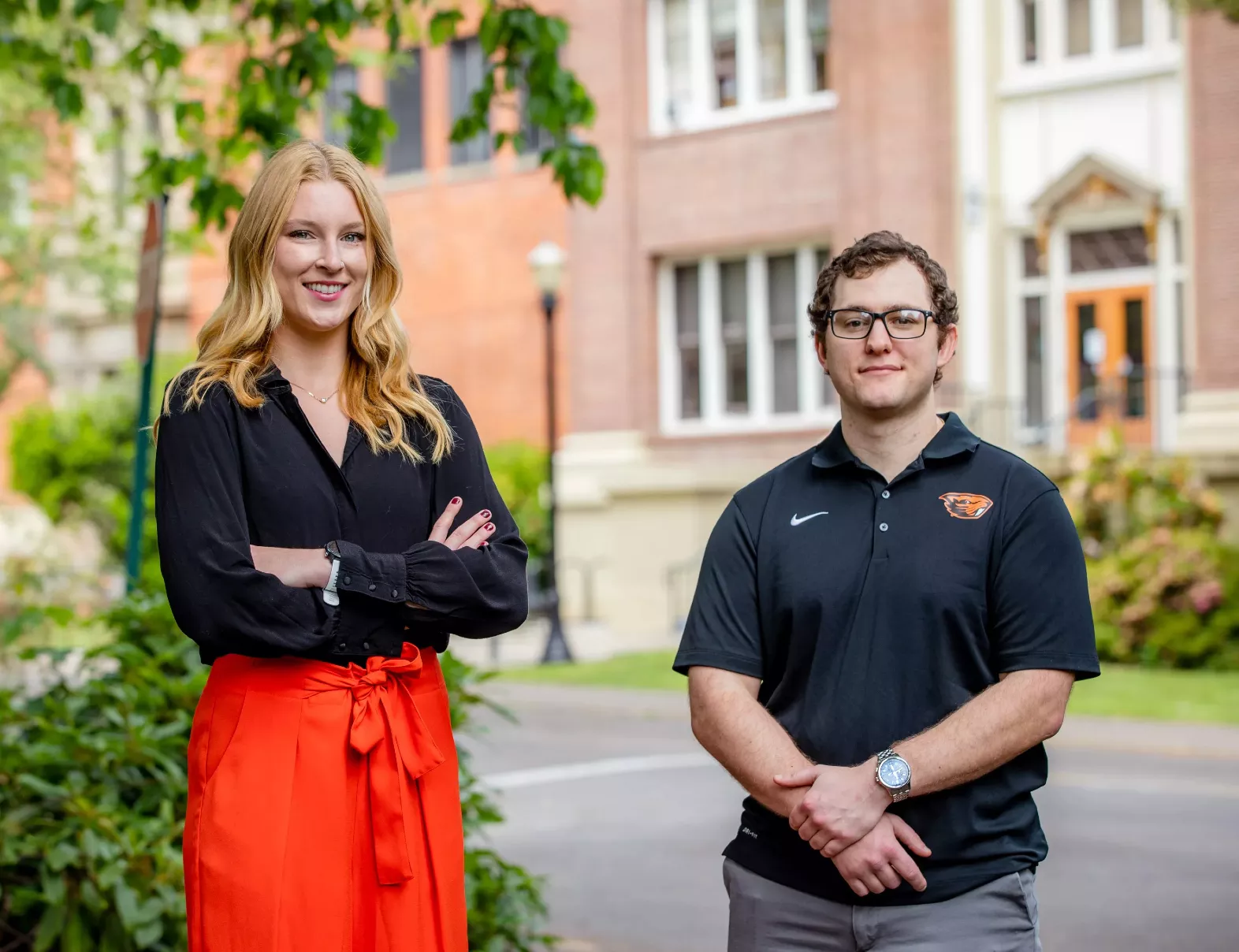
Measuring and predicting tidewater glacier melt rates
Sea-level rise will affect millions of people in coastal communities within the next several decades. Accurately predicting how quickly the world’s oceans will rise has been challenging, because the rise depends on complex interactions among many processes.
“One process that may play a surprisingly large role is small swirls and eddies of warm water controlling the rate of ice melt at the near-vertical cliff faces of tidewater glaciers. However, getting close enough to these dangerously unstable ice cliffs to observe such small-scale dynamics has been difficult.

An interdisciplinary team of researchers at Oregon State University and the University of Oregon is now collaborating to obtain the most accurate measurements ever recorded of tidewater glacier melt and its contributing processes.
“Constraining measurements of tidewater glacier melt rates could really improve sea-level rise projections, which will help with community planning around the world,” said team member Meagan Wengrove, assistant professor of coastal and ocean engineering.
The team will use multibeam sonar mounted to a robotic, rigid-hull inflatable boat custom-built by Jonathan Nash, professor of oceanography, to make melt-rate measurements as close as possible to the submerged near-vertical face of LeConte Glacier, an actively calving glacier about 110 miles southeast of Juneau, Alaska. The robotic boat will also launch 4-foot-long rods into the glacier to take direct measurements. Wengrove and colleagues will then couple this data with data from underwater acoustic and optical sensors to better understand the millimeter-scale processes that control ice melt and glacier stability.
The research is supported by a $2.2 million grant from the National Science Foundation and a $1 million award from the Keck Foundation.
785
Undergraduate Students
69
Masters Students
94
Doctoral Students
48
Academic Faculty
9
Professional Society Fellows
$3.3M
Scholarship Support
$12.8M
Research Funding
Community resilience in the aftermath of a wildfire
Schools and health care facilities are crucial to a community’s recovery after a major catastrophe, according to a multidisciplinary team of researchers who examined the aftermath of the 2018 Camp Fire that devastated Paradise, California. Oregon State’s Erica Fischer, assistant professor of structural engineering, was part of that effort, which found that effective resiliency planning must account for socially vulnerable people and the many ways these institutions connect them to their communities.
The team published four papers: The first three concerned civil infrastructure damage, while the fourth focused on implications for community members of damage to schools and hospitals. The researchers spent six months in 2019 interviewing 33 people representing 18 organizations in Paradise and surrounding Butte County. A key takeaway is the complex and continuing challenge that mental health poses for the town’s school system. “We found that after an event like the Camp Fire, schools’ ability to support student, teacher, and staff mental health is critical to community recovery,” Fischer said.
The research team found that in Paradise, as in other communities, there’s a strong two-way dependence between school system viability and housing and population restoration. Schools need students and the funding that goes with them, and residents of rebuilt housing need schools for their children.
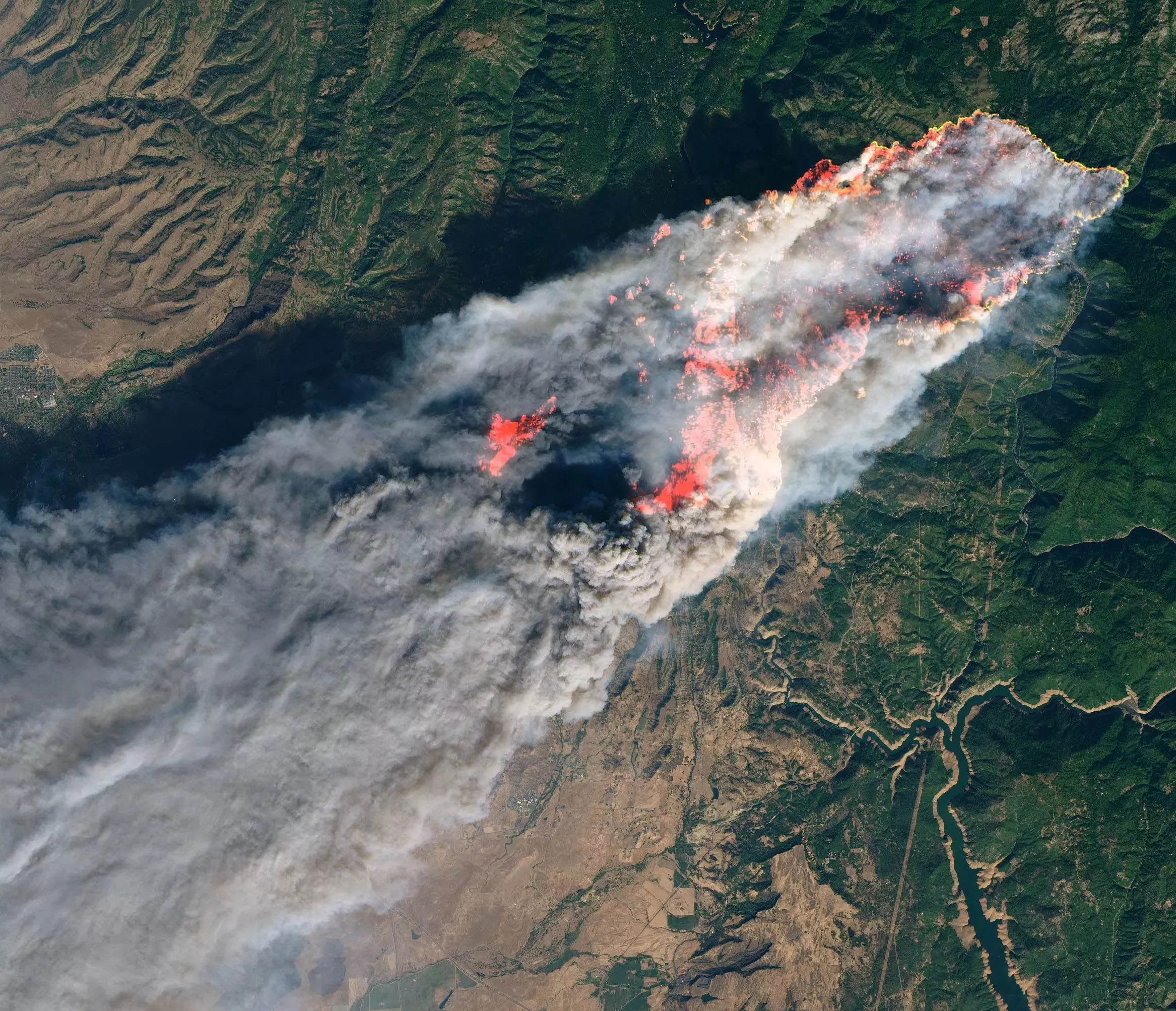
More recently, Fischer joined colleagues investigating the aftermath of the 2021 Marshall Fire in Colorado. Among the questions she hopes to answer are how some homes were able to survive the fire while others nearby burned, whether the fire degraded the local water distribution system or contaminated its water supply, and how governments across the West can improve building codes and mitigation efforts.
Saving PDX
Research led by Armin Stuedlein, professor of geotechnical engineering, will help the Port of Portland save as much as $50 million on work to ensure a Portland International Airport runway can survive an expected magnitude 8.0 to 9.0 Cascadia subduction zone earthquake.

The project involved three days of test detonations at the airport in 40- and 90-foot-deep blast casings. By studying the series of controlled blasts, researchers could determine how the sand and silt soils underlying the airport would respond to a “megathrust earthquake” and what ground improvements are needed to prevent liquefaction and keep the runway intact. “When a big Cascadia earthquake hits, the Port of Portland is really the only possible venue to fly in supplies,” Stuedlein said. “Having a runway serviceable is a key requirement for the whole Northwest; we expect I-5 to be shut down and bridges on the Columbia and Willamette to be out of service.”
The airport plans to employ deep soil mixing for its ground improvement. That method involves injecting water and a cement slurry into the ground using heavy equipment resembling a giant drill, at a cost of about $1 million per foot of soil depth. Stuedlein’s tests determined that the critical depth for the runway project was only about half of the presumed 100 feet, resulting in a potential savings of $50 million.
The Port of Portland is a member of the Cascadia Lifelines Program, formed by Oregon State University to help the state’s largest infrastructure operators find the most effective and cost- efficient ways to mitigate earthquake damage.
Scale models predict storm damage
The findings of a recent study at Oregon State University have important implications for designing and constructing storm-resistant homes. When subjected to simulated storm conditions in the lab, two scale model buildings — one elevated, one on grade — responded like actual wood-frame homes during hurricanes, validating the use of models to yield design information for low-lying areas susceptible to large waves and storm surges. The research, conducted by graduate student Sean Duncan and Dan Cox, professor of coastal and ocean engineering, Andre Barbosa, professor of structural engineering, and Pedro Lomonaco, director of the O.H. Hinsdale Wave Research Laboratory, also revealed that lidar could track the models’ damage progression as the waves and storm surges increased in intensity.
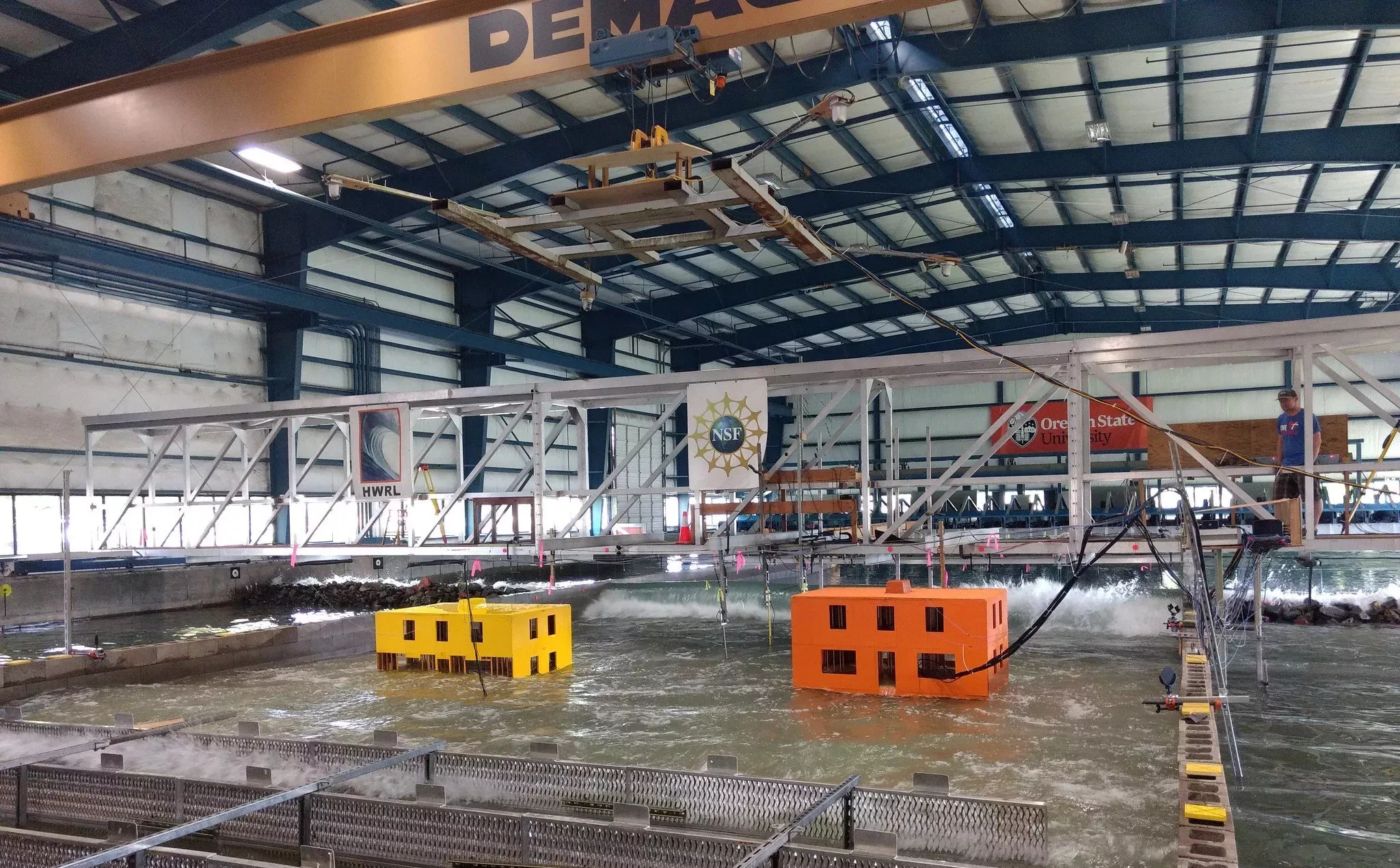
Low-carbon cement approved for California highways

Caltrans, the agency that oversees over 50,000 miles of highways and freeways in California, has approved the use of low-carbon cement following testing by Oregon State’s College of Engineering.
Switching to Portland-limestone cement, or PLC, will help reduce the carbon footprint of California’s transportation system by as much as 10% compared to standard Portland cement. The higher-limestone formulation produces lower carbon emissions and costs less. The PLC approval came after Caltrans-funded research conducted by Oregon State’s Jason Weiss, professor of infrastructure materials and the Miles Lowell and Margaret Watt Edwards Distinguished Chair in Engineer
“Our goal is always to produce better, more sustainable and longer-lasting concrete,” Weiss said. “We don’t want to do research that sits in a book on a shelf. We want to impact standards, specifications, and construction practices that move the civil and construction engineering profession forward.”
New Hires
Clotilde Pierson
Assistant Professor Civil and Construction Engineering
Farahnaz Soleimani
Assistant Professor Civil and Construction Engineering
